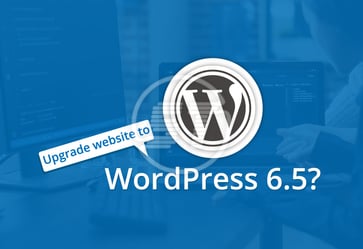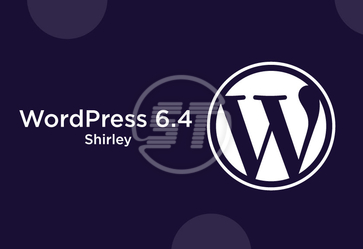‘Accessibility’ is a familiar word. We all knew about accessibility but lately the web world has started using this term more often. Why? Why has it become a profound reason to measure your digital assets?
So, in simple words, because from long-time digital assets were being made without thinking of its usability. When you develop any digital assets, it ought to be usable. Otherwise, it is of no use. To make your web application, website, or any other digital assets usable and to make it available for everyone, the law has given a defined set of compliance guidelines.
To avoid any legal issues and to reach out to a wider segment, you ought to assemble a site that can be used by everyone.
Accessibility is a continuous process. You regularly audit your site and fix the issues to make your designs better and more accessible.
When we talk about accessibility, we create an image of a compliant website accessible to all audiences. It is correct in a way! There are specific rules that we abide to follow to create an accessible website.
To avoid any legal issues and to get more traffic, you try to assemble a site for literally everyone. Accessibility is a continuous process. You can regularly audit your site and fix the issues to make your designs better and more accessible.
When you work on the accessibility factor, it enhances the quality of your website as well. You work on different components of your site; therefore, people with visibility problems, cognitive disorders, hearing issues, etc., can understand your content.
If your content is hard to read, challenging to see, or complex to navigate, you are making a difficult-to-peruse website. It will not be accessible to those with some or other physical problems. Let us take you to an ultimate guide on WordPress website accessibility considerations for their themes, plugins, content, images and many more components of websites.
WordPress Accessibility Standards
WordPress accessibility implies WordPress core, WordPress.org websites, and all plugins should conform to the Web Content Accessibility Guidelines (WCAG). If websites are built under WCAG 2.0 and 2.1 versions’ guidelines, they are absolutely accessible.
These guidelines say a lot about the content fonts, color, background, moving content, navigations, and much more. You ought to learn about the guidelines and apply them on your website.
WordPress claims to have accessible themes that you can find in WordPress Theme Directory. There are dozens of accessibility-ready themes. You can sort a theme based on its design and in-built accessibility features. WordPress provide ‘Accessible Ready’ themes. Your developer or designer team can also customize it for you based on your WordPress development requirements and make it accessible.
WordPress Accessibility Standards to look for:
Alt text for images:
Images in your WordPress theme need alt text to be fully comprehensive for screen readers. Assistive technologies understand the alt text and make it recognizable to people with disabilities.
Keyboard usage:
For keyboard-only users, the Tab button should work to navigate predictably through all the interactive features. Links in content, menus, forms, everything should be accessible with a keyboard because people with mobility impairment cannot use a mouse.
Color contrast:
The contrast ratio should be 7:1, which is mentioned in WCAG 2.0 (1.4.6 Contrast) guideline. Large scale text and images have a color contrast of 4.5:1, inactive user interface or pictures for decoration, and the logo does not have any contrast requirement.
Alternative to time-based media:
Audio and video should have alternative text and proper labels to make them more comprehensive.
HTML Headings:
Headings help in proper navigation to screen readers and understand the content inside. The themes should have a perfect headings order.
Interactive content:
Any moving content should not play automatically because people with cognitive issues can have a severe problem understanding the content.
ARIA rules:
Accessible rich internet application with web accessibility initiative (WAI-ARIA 1.1) have given some technical specifications. They bridge such areas with accessibility issues that cannot get handled with native HTML. WordPress themes with ARIA compatibility can help you build an accessible website.
Typography:
16 px font size for body text and sans or serif font style is recommended in WCAG guidelines. Fancy or cursive text is not advisable.
Applying WordPress Standards
WordPress core has made an official policy that new or updated codes should follow WCAG 2.0 guidelines at level AA. This is a practice that all website owners should start following to provide an accessible site to their users.
Website’s front-end accessibility is the most crucial factor. Front-end accessibility is achievable, as we discussed, by following the guidelines mentioned above and having an accessible theme. Accessible themes help in achieving a remarkable user experience. Adding these standards is not difficult. Also, accessible WordPress themes have in-built features that allow you to obtain the desired result.
What about back-end and plugins? Back-end and site plugins impact the website’s accessibility. Your back end should have all the required features to help you add content and other functionalities to the website. Plugins are also an essential component in your website building. Ask your developers to select them carefully to avoid accessibility issues.
Also, WordPress developers should follow a few points to ensure an accessible result-
- Descriptive screen reader text ought to be included in the theme. Like we said, visually impaired people cannot see images and icons.
- Developers should use real HTML components, for example, links or buttons. They should not use div or span because they are not accessible.
- ARIA labels help differentiating among HTML5 tags. So, you can add ARIA labels to sort the same tags.
- There are accessibility issues with ‘Chosen’ (a JavaScript plugin). So, you can use real elements like combo boxes instead of these external libraries.
WordPress default styles and tools are made to make an accessible design. Instead of using your own tools, use WordPress options. They are reliable and tried and tested by WordPress core. Thus, your design gets authenticity approval from WordPress itself.
Creating a complex, stylish design is not a wise idea. Make a website with WordPress that is efficient and accessible.
Website Evaluation
To evaluate your WordPress website, it is best to pretend to be like a user. You can inactivate the mouse functioning and navigate using the only keyboard to check its performance.
Likewise, users with visual disabilities use screen readers; you can also use them to read your content. It will help you to find alt text, labels, headings, etc., and if any issue arises, then you know where the problem is.
You can listen to the content using any free assistive technology, let’s say, using Microsoft Narrator on Windows. This free tool will help you to find the loopholes in the content.
These are a few manual testing methods. Using the above and other techniques, you can peruse your entire content as an end-user.
To test your overall WordPress websites or applications, there are many tools available. They make your testing reliable and accurate. A few tools are Google lighthouse developer tools, WAVE, NVDA, JAWS, VoiceOver, etc.
Both manual and tool testing are advisable. You can cross-check tool testing manually as well to get more stalwart outcomes. Testing, fixing issues, and re-testing help construct an utterly accessible website!
Accessibility is necessary!
Accessibility is creating a buzz across the globe. People are becoming aware of accessibility and accessible websites. Many site owners are now looking forward to accessible sites to avoid any legal obligations. Now, it is mandatory to have an accessible site in the US.
To avoid legal consequences, you must follow all the WCAG guidelines and construct a WordPress website around them. Then a significant work you can do is write an Accessibility statement and mention all rules you have fulfilled while making the website.
Wrap-up
WordPress Accessibility is not only a term. It is about your design, its quality, user experience, and services that make your website usable to all your users. Accessibility implies useful design with minimal elements but effectively impactful. When you create and deliver an accessible website you reach a segment that has some or other physical disabilities due to which they cannot peruse the content with complexity.
When you opt for developing an accessible WordPress website, you not only benefit your users, but you do a favor for yourself as well. Because eventually it assists you to grow your business. Moreover, it is inhumane to snatch the right of learning from many individuals who cannot explore the web due to some minor or major disabilities. This article will help you in developing an accessible WordPress website with WordPress accessibility standards.
Is your WordPress website accessible? With a team of WordPress developers, we provide complete WordPress ADA website accessibility services including audit, strategy, design, and development services which are following ADA, WCAG 2.0, 2.1, 2.2 and Section 508 standards. Get in touch with us at [email protected] to know more about how we can make your WordPress website ADA compliant or submit the following request form with your requirements.


